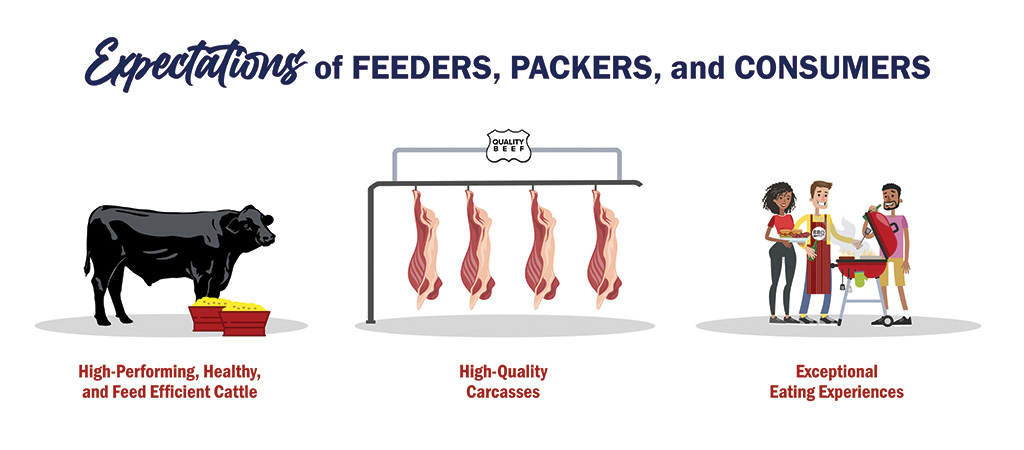Publish date: 4.24.24
The increase in the global demand for meat has positioned premium beef as a vital source of animal protein. This demand presents exciting opportunities for beef producers as we see more consumers putting beef on their dinner plates. It is simple. The law of supply and demand tells us that as consumers increase their demand for beef protein, the need for beef animals in the supply chain will also increase.
However, the supply chain is not looking for just any old beef animal. They are looking for a consistent supply of healthy, predictable, and profitable animals to fill feedyards and processors. The desire for these types of animals and the overall breeding strategy shift in the dairy industry has led the supply chain to consider sourcing high-quality beef on dairy calves.
As beef producers, you might be wondering why you should care about the beef on dairy industry. It does not necessarily have anything to do with how intertwined the dairy industry is becoming within the beef supply chain. Rather, it is about considering your marketplace and leveraging the tools available to you to maximize profitability. This discussion will hopefully encourage you to think about who you are competing against in your marketplace, make you aware of the impact of beef on dairy, and differentiate yourself with the tools available.
The Beef-on-Dairy Concept and Its Impact
While some may have never thought of this before, the dairy industry has always been a part of the beef supply chain because of cull cows and bull calves. Today, the Holstein dairy cow has become more valuable in the beef supply chain by producing a higher-quality product than previously. It has been shown that dairy producers, who use the right terminal beef genetics, can produce feeder cattle that will achieve upper-two-thirds Choice and Prime. What does that mean for you? It means the benchmark of quality has been raised for individuals selling their products in the beef supply chain.
Reasons the Beef Supply Chain Values Beef Cross Calves
- Higher red meat yield as compared to fullblood dairy carcasses
- Similar performance to conventional beef animals in terms of quality grade
- Longissimus muscle shape improvements over the small and narrow traditional dairy loins
- Improved meat color to offset the dark-appearing color of traditional dairy carcasses
- Similar performance to Holstein counterparts in terms of tenderness
- Significant average in feedlot growth compared to straightbred Holsteins
- Consistent supply of offspring year-round, which helps improve market stability
- Meticulous recordkeeping and flow of beef on dairy calves through a dairy and the beef supply chain offer a real advantage for traceability
- Ability to showcase a sustainable story of productivity, efficiency, and traceability
Boost the Marketability of Your Cattle Destined for the Beef Supply Chain
While it is unlikely that beef on dairy will ever replace native beef as the trusted, “go-to” product for quality and performance, it could be time for you to reflect on the product you are creating, how you get paid, and the competition in your marketplace. With genetic strategies and technology, beef producers have an opportunity to maximize terminal profitability and stand out from beef cross competition.
Don’t leave money on the table on sale day. Leverage the following tools to maximize your terminal profitability:
- Harness the power of synchronization
- Gain the genetic advantage with artificial insemination
- Consider breeding strategies to segment your herd
- Use sexed semen to create the right replacements and produce more profitable feeder cattle
- Utilize sires with breed-leading terminal traits and selection indexes
Traditional beef continues to reign supreme in the beef supply chain. However, the evolution of the beef on dairy industry has enhanced the quality of cattle entering the chain. Thus, it is critical to assess your individual goals, be aware of your marketplace, and take advantage of opportunities to maximize profitability. That’s why ABS offers the tools, technology, and genetics to assist producers in making matings with intent to maximize overall profitability.
Learn more about the impact of beef on dairy within the beef supply chain by reading our article originally published in Progressive Cattle.






